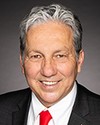No, but this one is on the portrayal side of it. I want to talk about the media because I am and we are fixated on television. The media needs to be seen as the entirety of perception, as where we're all seeing all of these points of view.
One, in addition to that review that you can actually take back to the media, I believe you need—and it's pretty simplistic—a style guide. It's not difficult: a style guide, a communications strategy style guide. You give Sport Canada the cause. They can do it. You bring in the media partners, sit down, and come up with the top 10 things that you can or cannot say.
Again, I'll go back and say that I don't think the sports media are generally sexist; they just don't know what to say. I did not let them say “ladies” on air. They said, “Why, Nancy, why?” Because you don't say “gentlemen”, okay? It just has to be equal. It's like just this whole list of here's what to do and here's what not to do, because they're confused, right? That's a practical situation.
Then, because I'm suggesting that it come out of Sport Canada, it goes to the NSOs and the MSOs, because those are your leverage points. You tell them that this is really important and that this is the portrayal they have to give, all the NSOs and MSOs and Sport Canada and the.... I couldn't figure out the ministry where your federal money.... You spend a lot of money, the government does, on sports events, and any media buys that you make need to be tied back to that style guide.
If an NSO getting public money brings in a sponsor that has an outfit and does a commercial spread leading up to the games or whatever, and they show a woman in a position in a photo that is not about her strength or speed but more about what she looks like, no: that has to be part of the contract. That has to be part of the contract with the NSO, so that it's practical, it's in there.... I'm sorry. I could go on forever, and we'd be here until the Christmas break, but it's so—




